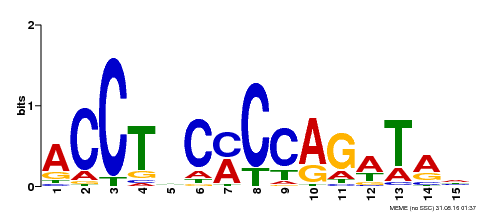 |
PlantRegMap/PlantTFDB v5.0
Plant Transcription
Factor Database
|
| Home TFext BLAST Prediction Download Help About Links PlantRegMap |
Transcription Factor Information
| Basic Information? help Back to Top | |||||||||
|---|---|---|---|---|---|---|---|---|---|
| TF ID | orange1.1g012364m | ||||||||
| Common Name | CISIN_1g009831mg | ||||||||
| Organism | |||||||||
| Taxonomic ID | |||||||||
| Taxonomic Lineage |
cellular organisms; Eukaryota; Viridiplantae; Streptophyta; Streptophytina; Embryophyta; Tracheophyta; Euphyllophyta; Spermatophyta; Magnoliophyta; Mesangiospermae; eudicotyledons; Gunneridae; Pentapetalae; rosids; malvids; Sapindales; Rutaceae; Aurantioideae; Citrus
|
||||||||
| Family | C2H2 | ||||||||
| Protein Properties | Length: 466aa MW: 51783.3 Da PI: 7.2194 | ||||||||
| Description | C2H2 family protein | ||||||||
| Gene Model |
|
||||||||
| Signature Domain? help Back to Top | |||||||
|---|---|---|---|---|---|---|---|
| No. | Domain | Score | E-value | Start | End | HMM Start | HMM End |
| 1 | zf-C2H2 | 21.2 | 7.6e-07 | 272 | 293 | 2 | 23 |
EETTTTEEESSHHHHHHHHHHT CS
zf-C2H2 2 kCpdCgksFsrksnLkrHirtH 23
C++Cgk F+r nL+ H+r H
orange1.1g012364m 272 FCTICGKGFKRDANLRMHMRGH 293
6*******************98 PP
| |||||||
| Protein Features ? help Back to Top | ||||||
|---|---|---|---|---|---|---|
| Database | Entry ID | E-value | Start | End | InterPro ID | Description |
| SuperFamily | SSF57667 | 1.91E-5 | 269 | 296 | No hit | No description |
| PROSITE profile | PS50157 | 12.03 | 271 | 298 | IPR007087 | Zinc finger, C2H2 |
| SMART | SM00355 | 0.0026 | 271 | 293 | IPR015880 | Zinc finger, C2H2-like |
| Gene3D | G3DSA:3.30.160.60 | 7.6E-6 | 272 | 322 | IPR013087 | Zinc finger C2H2-type/integrase DNA-binding domain |
| PROSITE pattern | PS00028 | 0 | 273 | 293 | IPR007087 | Zinc finger, C2H2 |
| SMART | SM00355 | 53 | 320 | 353 | IPR015880 | Zinc finger, C2H2-like |
| SMART | SM00355 | 23 | 358 | 380 | IPR015880 | Zinc finger, C2H2-like |
| Gene Ontology ? help Back to Top | ||||||
|---|---|---|---|---|---|---|
| GO Term | GO Category | GO Description | ||||
| GO:0006355 | Biological Process | regulation of transcription, DNA-templated | ||||
| GO:0010044 | Biological Process | response to aluminum ion | ||||
| GO:0010447 | Biological Process | response to acidic pH | ||||
| GO:0005634 | Cellular Component | nucleus | ||||
| GO:0003676 | Molecular Function | nucleic acid binding | ||||
| GO:0003700 | Molecular Function | transcription factor activity, sequence-specific DNA binding | ||||
| GO:0046872 | Molecular Function | metal ion binding | ||||
| Sequence ? help Back to Top |
|---|
| Protein Sequence Length: 466 aa Download sequence Send to blast |
MDLKEGLRAE TWAKSSLAEN EMSKRISSNN PCFTDFNSQQ YQQKWEDPSI LDYDIRINPA 60 FQEFNQPPQN QSSLPCDPTN QIKNPFQMNE NLQTNKMQDW DPKAMLNNLS FLEQKIHELQ 120 DLVHLIVGRR SQILGRPDEL VAQQQQLITA DLTSIIVQLI STAGSLLPSM KHTLSAATPS 180 MGQLGQFGGV PFPPGAGLSD SIQVQNSCAK KVSNQSNPID LVGNSGTQQN HAVEEHDLKD 240 EDDADDGEQL PPGSYEILQL EKEEILAPHT HFCTICGKGF KRDANLRMHM RGHGDEYKTP 300 AALAKPHKES SSEPMLIKRY SCPYAGCKRN KDHKKFQPLK TILCVKNHYK RTHCDKSYVC 360 SRCNTKKFSV IADLKTHEKH CGKDKWLCSC GTTFSRKDKL FGHIALFQGH TPAIPLDETI 420 KGLAGPSDRR EGNEATSKIG STNFNFGSSV PNGTGVSDMD AKGES* |
| Expression -- UniGene ? help Back to Top | ||||||
|---|---|---|---|---|---|---|
| UniGene ID | E-value | Expressed in | ||||
| Csi.6381 | 0.0 | flower| fruit | ||||
| Expression -- Description ? help Back to Top | ||||||
|---|---|---|---|---|---|---|
| Source | Description | |||||
| Uniprot | TISSUE SPECIFICITY: Expressed in roots (e.g. root tips and lateral roots), leaves, flowers (e.g. stigma, sepal, anther, and filament), stems, siliques and cotyledons. {ECO:0000269|PubMed:23935008}. | |||||
| Functional Description ? help Back to Top | ||||||
|---|---|---|---|---|---|---|
| Source | Description | |||||
| UniProt | Probable transcription factor. Together with STOP2, plays a critical role in tolerance to major stress factors in acid soils such as proton H(+) and aluminum ion Al(3+). Required for the expression of genes in response to acidic stress (e.g. ALMT1 and MATE), and Al-activated citrate exudation. {ECO:0000269|PubMed:17535918, ECO:0000269|PubMed:18826429, ECO:0000269|PubMed:19321711, ECO:0000269|PubMed:23935008}. | |||||
| Binding Motif ? help Back to Top | |||
|---|---|---|---|
| Motif ID | Method | Source | Motif file |
| MP00196 | ampDAP | Transfer from AT1G34370 | Download |

| |||
| Regulation -- Description ? help Back to Top | ||||||
|---|---|---|---|---|---|---|
| Source | Description | |||||
| UniProt | INDUCTION: By shock H(+) and Al(3+) treatments. {ECO:0000269|PubMed:17535918}. | |||||
| Regulation -- PlantRegMap ? help Back to Top | ||||||
|---|---|---|---|---|---|---|
| Source | Upstream Regulator | Target Gene | ||||
| PlantRegMap | Retrieve | Retrieve | ||||
| Annotation -- Protein ? help Back to Top | |||||||
|---|---|---|---|---|---|---|---|
| Source | Hit ID | E-value | Description | ||||
| Refseq | XP_006434627.1 | 0.0 | protein SENSITIVE TO PROTON RHIZOTOXICITY 1 | ||||
| Refseq | XP_006473208.1 | 0.0 | protein SENSITIVE TO PROTON RHIZOTOXICITY 1 | ||||
| Swissprot | Q9C8N5 | 0.0 | STOP1_ARATH; Protein SENSITIVE TO PROTON RHIZOTOXICITY 1 | ||||
| TrEMBL | A0A067GZ19 | 0.0 | A0A067GZ19_CITSI; Uncharacterized protein | ||||
| STRING | XP_006473208.1 | 0.0 | (Citrus sinensis) | ||||
| STRING | XP_006434627.1 | 0.0 | (Citrus clementina) | ||||
| Best hit in Arabidopsis thaliana ? help Back to Top | ||||||
|---|---|---|---|---|---|---|
| Hit ID | E-value | Description | ||||
| AT1G34370.2 | 1e-176 | C2H2 family protein | ||||
| Link Out ? help Back to Top | |
|---|---|
| Phytozome | orange1.1g012364m |



